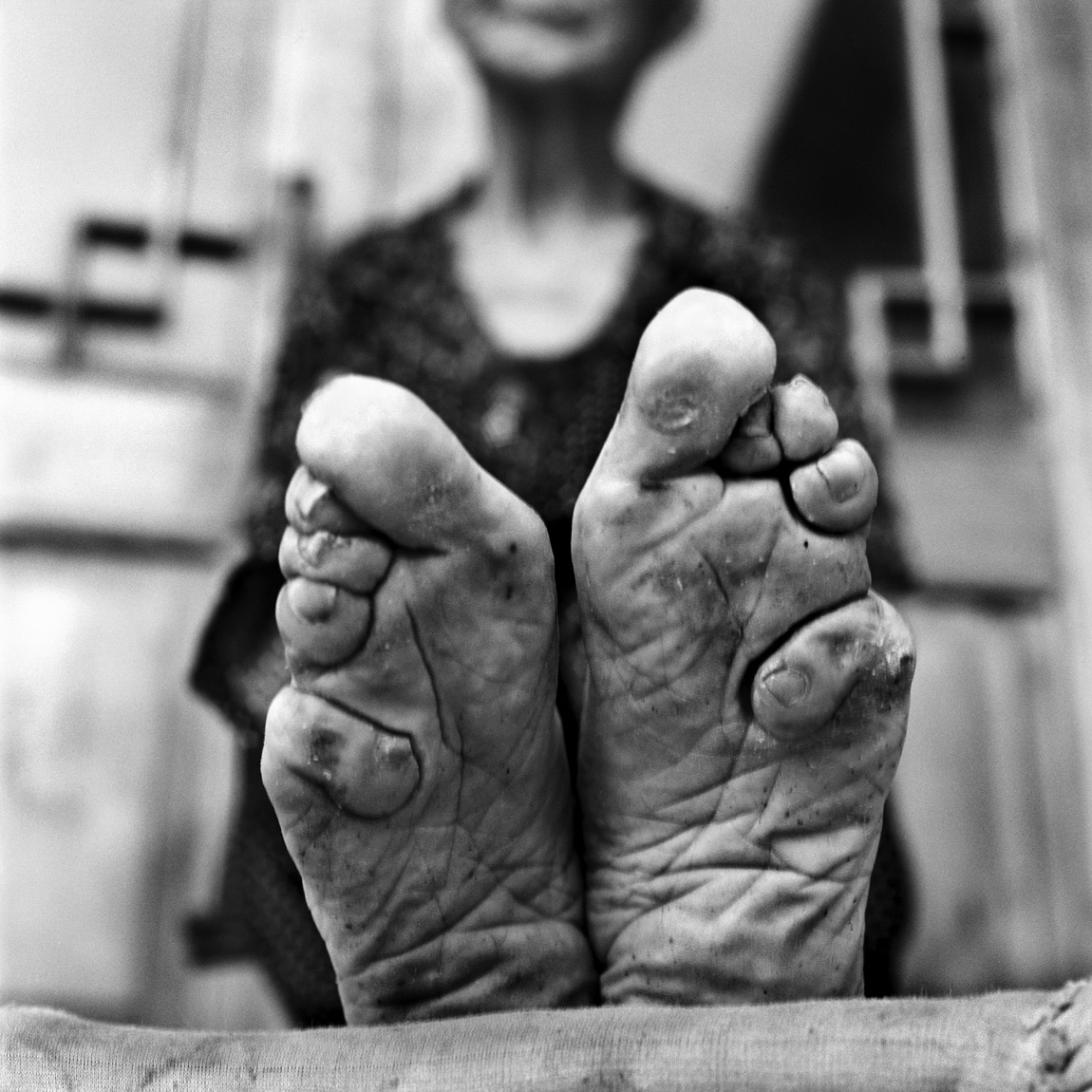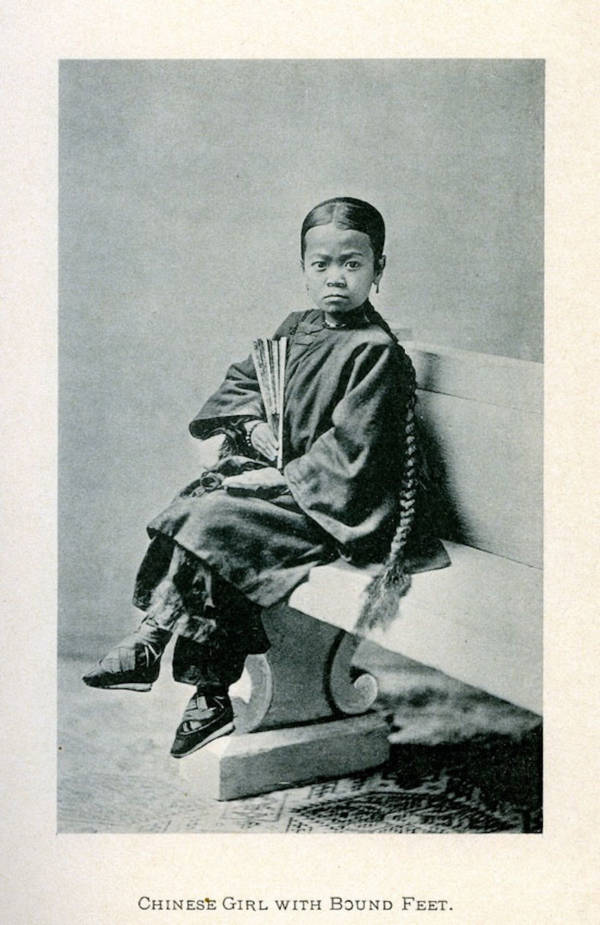Geisha Foot Binding: Unveiling The Truth Behind The Myth
Geisha foot binding is a topic that has sparked curiosity and debate among history enthusiasts and cultural scholars alike. Many people are fascinated by the intricate world of geishas, but there's a common misconception about foot binding being part of their tradition. In this article, we'll dive deep into the truth behind this controversial subject. So, buckle up and get ready for a journey through history, culture, and the real story of geisha foot binding.
When we talk about geishas, images of elegance, grace, and mystery often come to mind. These iconic Japanese entertainers have captured the imagination of people worldwide. However, the notion of geisha foot binding has been a topic of intrigue, with many believing it to be a historical fact. But is it really true? Let's find out!
This article aims to debunk myths, provide accurate information, and give you a comprehensive understanding of geisha foot binding. By the end of it, you'll have a clearer picture of the geisha tradition and its connection, or lack thereof, to foot binding. So, let's get started!
Read also:Unveiling The Legend The Extraordinary Life And Legacy Of James A Ben
Table of Contents:
- The History of Geisha
- What is Foot Binding?
- Geisha Foot Binding: The Myth
- Cultural Significance
- A Day in the Life of a Geisha
- Common Misconceptions
- Modern Geisha and Tradition
- The Historical Impact
- Geisha Training: The Real Deal
- Conclusion: Setting the Record Straight
The History of Geisha
Before we dive into the specifics of geisha foot binding, it's essential to understand the rich history of geishas themselves. The word "geisha" translates to "artist" or "person of the arts." Geishas emerged in Japan during the early Edo period (1603–1868) and quickly became an integral part of Japanese culture.
Initially, geishas were male entertainers who performed music and comedic acts. However, as time progressed, women began to dominate the scene, bringing their unique talents and charm to the forefront. Geishas became known for their exceptional skills in traditional Japanese arts, including music, dance, tea ceremonies, and conversation.
Living in exclusive districts called hanamachi, geishas were highly respected and sought after for their ability to provide intellectual and artistic companionship. Their training was rigorous, and their lifestyle was a blend of artistry, discipline, and elegance.
What is Foot Binding?
Foot binding is a historical practice that originated in China during the Song Dynasty (960–1279). This custom involved tightly wrapping young girls' feet with bandages to prevent them from growing. The goal was to create tiny, pointed feet, considered a symbol of beauty and status in Chinese society.
This painful process often resulted in lifelong disabilities, but it was seen as a mark of femininity and refinement. Foot binding spread across various social classes, but it eventually fell out of favor in the early 20th century due to changing societal norms and the influence of Western ideas.
Read also:99 Frycom Your Ultimate Destination For Mouthwatering Recipes
Now, you might be wondering, "Does this practice have anything to do with geishas?" Let's explore the connection—or lack thereof—in the next section.
Geisha Foot Binding: The Myth
Understanding the Misconception
One of the most prevalent myths surrounding geishas is the belief that they practiced foot binding. This misconception likely stems from the fact that foot binding was a well-known tradition in East Asia, particularly in China. However, there is no historical evidence to suggest that geishas in Japan ever engaged in foot binding.
Geishas were known for their graceful movements and elegant kimonos, but their physical appearance was not tied to the practice of foot binding. Instead, they relied on years of training and discipline to perfect their art. The idea of geisha foot binding is more of a cultural mix-up than a historical reality.
Why the Confusion?
The confusion between geisha foot binding and Chinese foot binding can be attributed to the lack of cultural awareness in the past. When Westerners first encountered East Asian cultures, they often generalized practices across different countries. This led to the mistaken belief that geishas, like Chinese women, practiced foot binding.
Moreover, the delicate and poised demeanor of geishas might have given the impression that they underwent similar physical modifications. However, this couldn't be further from the truth. Geishas achieved their grace through practice, not physical alteration.
Cultural Significance
The cultural significance of geishas extends far beyond their artistic talents. They represent a blend of tradition and modernity, embodying the essence of Japanese culture. Geishas are not just entertainers; they are keepers of a centuries-old tradition that continues to evolve with the times.
The misconception about geisha foot binding highlights the importance of cultural understanding and education. By dispelling myths and promoting accurate information, we can appreciate the true beauty and complexity of geisha culture. It's crucial to recognize that geishas' elegance comes from their dedication to their craft, not from any physical modifications.
A Day in the Life of a Geisha
Training and Routine
Becoming a geisha is no easy feat. It requires years of rigorous training, starting from a young age. Apprentice geishas, known as maikos, undergo intensive lessons in traditional Japanese arts, including music, dance, and tea ceremonies. They also learn the intricacies of wearing kimonos, applying makeup, and maintaining proper etiquette.
A typical day in the life of a geisha involves early morning practice sessions, followed by afternoon lessons and evening performances. Their schedule is demanding, but their passion for their art keeps them going. Geishas are not just performers; they are ambassadors of Japanese culture, dedicated to preserving its beauty and traditions.
Artistic Expression
Geishas are known for their ability to express emotions through their performances. Whether it's a hauntingly beautiful dance or a captivating song, they have the power to transport their audience to another world. Their artistry is a reflection of their inner selves, a testament to their dedication and talent.
Despite the challenges they face, geishas continue to thrive in a rapidly changing world. They adapt to new technologies and trends while staying true to their roots, ensuring that their legacy lives on for future generations.
Common Misconceptions
Beyond Foot Binding
Geisha foot binding is just one of the many misconceptions surrounding these enigmatic entertainers. Another common misunderstanding is the belief that geishas are involved in the sex industry. This could not be further from the truth. Geishas are artists, not sex workers. Their role is to provide intellectual and artistic companionship, not sexual services.
Modern Geisha
Some people think that geisha culture is a thing of the past, but that couldn't be further from reality. Modern geishas continue to practice their art, adapting to the changing times while maintaining their traditions. They use social media and other digital platforms to connect with a global audience, breaking down cultural barriers and sharing their unique heritage with the world.
Modern Geisha and Tradition
Embracing Change
Today's geishas are a testament to the resilience and adaptability of Japanese culture. They embrace modern technology while staying true to their roots. Social media platforms like Instagram and YouTube have become powerful tools for geishas to showcase their art and connect with people worldwide.
Through these platforms, geishas can share their stories, demonstrate their skills, and educate others about their culture. This digital presence helps demystify geisha culture and dispel common misconceptions, such as the myth of geisha foot binding.
The Historical Impact
The impact of geisha culture on Japanese history and society cannot be overstated. Geishas have played a significant role in shaping the cultural landscape of Japan, influencing everything from fashion to the arts. Their dedication to their craft has inspired countless generations of artists and performers.
Moreover, the geisha tradition serves as a reminder of the importance of preserving cultural heritage. In a world where globalization threatens to erase unique traditions, geishas stand as a beacon of hope, reminding us of the value of cultural diversity and the need to protect our shared history.
Geisha Training: The Real Deal
The Path to Becoming a Geisha
Becoming a geisha is a journey that requires immense dedication and perseverance. Young girls, often starting as young as ten or eleven, enter okiya (geisha houses) to begin their training. This training, known as "geiko training," can last several years and covers a wide range of skills, from traditional Japanese music and dance to tea ceremonies and conversational skills.
Mastering the Arts
Geishas must master various traditional arts to succeed in their profession. They learn to play musical instruments like the shamisen and koto, perform classical Japanese dances, and conduct tea ceremonies with precision and grace. Their training also includes lessons in makeup application, kimono wearing, and the art of conversation.
This comprehensive education ensures that geishas are well-rounded individuals capable of providing intellectual and artistic companionship to their clients. It's a testament to their hard work and dedication that they continue to captivate audiences worldwide.
Conclusion: Setting the Record Straight
In conclusion, the myth of geisha foot binding is just that—a myth. Geishas are not, and never have been, involved in the practice of foot binding. Their elegance and grace come from years of training and dedication, not physical alterations. By dispelling this misconception, we can gain a deeper appreciation for the rich cultural heritage of geishas and their contributions to Japanese society.
We invite you to share your thoughts and questions in the comments section below. Feel free to explore other articles on our site to learn more about geisha culture and other fascinating topics. Together, let's continue the conversation and promote cultural understanding and education.
And remember, the next time someone mentions geisha foot binding, you'll know the truth behind the myth!
Article Recommendations


